If you’re wondering about the flowering stage, or the cannabis plant growth cycle after flowering, this article is for you. You’ll find information about cannabis plant growth and basic needs at each stage. Together, we’ll learn the tips and tricks for growing the healthiest and highest-yielding plants.
There are two main types of cannabis plants, and they have different growing recommendations and flowering periods.
Growing Cannabis Indica
Due to the shorter flowering period and higher yields of Cannabis Indica plants, this type of weed is standard among outdoor and indoor growers. Shorter flowering periods mean plants mature and finish growing sooner than Sativa strains, allowing the plants to thrive in Northern climates.
Growing Cannabis Sativa
Cannabis Sativa plants originated close to the equator and have long flowering periods. They are better equipped to handle hot, humid climates. If you are located in this type of environment, Sativa will typically be an excellent choice.
The Cannabis Plant Life Cycle
There are four main stages of marijuana plant growth. Understanding which cannabis nutrients and how much to provide during the plant stages is essential.
Germination Stage
The seed germination life stage can last anywhere from three to ten days. You’ll initially want to place your seeds in a dark place that is warm and humid. Once the marijuana seeds open and produce their first root, transfer each weed plant into small grow pots.
Seedling Stage
Once you have cannabis seedlings, it should take approximately two to three weeks to complete this essential phase.
You’ll notice serrated leaflet production during the cannabis seeding stage, followed by larger, bladed fan leaves. Fully developed weed plants have five to seven blades per leaf.
Vegetative stage
Next, your marijuana plants will enter the three to sixteen weeks, known as the vegetative stage. During the vegetative growth period, the plants will need at least sixteen hours of light or six hours of direct sunlight with several more hours of indirect sunlight.
You’ll need to provide essential nutrients, water, and maintenance during most of the vegetative phase.
Flowering Stage
Finally, the flowering stage lasts eight to twelve weeks and is the final step to producing buds. The plants need to be on a rotating light cycle of twelve hours of sun and twelve hours dark during the flowering season.
If you nurture cannabis plants, they should begin to produce large, resinous buds.
How to know your plant is ready to flower
Outdoor female cannabis plants will begin their flowering stages once the days become shorter and the fall season approaches. Female plants will start the flowering phase for indoor growth once the light cycle has been changed to twelve on/twelve off. Once you see a wispy white hair or two, you’ll know it has begun.
Your cannabis plant will begin to form female pre-flower clusters around the nodes within the first three weeks. You should notice that your plant is significantly growing in size, and its fan leaves are bright green. Around week three is the perfect time to check for disease, fungi, mold, or pests that could harm your weed plant’s effort in growing flowers.
How Long Will Cannabis take to Grow?
It can take nine weeks to eight months to grow your marijuana plant. The growth stage for the plant depends on whether you are growing weed indoors or outdoors. Indoor space allows cannabis growers to harvest after a few weeks or months, but growing outdoors depends on natural weather and annual cycles.
The Flow of Nutrients
Cannabis plants require certain elements to develop into healthy plants with high-quality buds. Sunlight gives them the energy to carry out photosynthesis, which is how plants utilize water, sunlight, CO2, and nutrients to grow.
The stomata absorb carbon dioxide, combine water in the plant cell’s chloroplasts, and convert it to glucose. Oxygen is then provided from the water soaked up through the root system, which is why poor drainage can harm otherwise good soil.
Many vitamins and minerals are carried by water and distributed around the plant to support healthy growth. Cannabis plants require vast amounts of macronutrients like potassium, nitrogen, and phosphorus and smaller micronutrients such as iron, copper, and zinc.
Plant roots take in nutrient-rich water, flowing throughout indoor and outdoor plants. Plant roots are made of complex cells called sclerenchyma cells. Micronutrients and macronutrients are distributed by water throughout each type of cell that performs its essential functions.
Common Issues When Cultivating Cannabis
Here are a few problems to look out for on your cannabis plants and buds:
- mildew
- mold
- rotting
- pH imbalance
- nitrogen deficiency
- spider mites
- algae
- nutrient burn
- light leaks
- verticillium wilt
What makes an Ideal Soil for Weed?
Cannabis is the type of plant that can thrive in diverse conditions, changing vastly from strain to strain and seed to seed.
Although they can grow in various soils, there should be a good balance of certain variables, including:
- Proper drainage
- Correct Soil pH and Soil Structure
- Good water retention
- Right macro and micronutrients ratio
- The appropriate balance of fungi to bacteria
The Importance of CO2 and pH
PH levels can significantly affect a grower’s plant success and yield size using soil, soilless or hydro methods.
- Your pH levels at the plant root significantly affect how well your marijuana absorbs nutrients and minerals and how readily they are available.
- Monitoring pH levels should be part of your weekly plant maintenance routine, especially for hydro cultivations.
- When adjusting pH, it would be best to make adjustments slowly and gently to avoid large fluctuations that can cause stress to the plants.
Adding Carbon Dioxide to your grow room has many benefits, including a faster-growing, more robust plant that will produce larger yields. With carbon dioxide, the rate of photosynthesis will be at a maximum, meaning they can produce carbohydrates much more quickly. Cannabis likes slightly acidic soil. The ideal pH is 6, but it can also thrive on either side at 5.8 and 6.3.
The Ins & Outs of Cannabis Seeds
Each type of cannabis seed varies in some way. You’ll want to know which ones you purchase before planting them in your garden to ensure they receive the correct fertilizers and nutrients during the cannabis seedling stage and beyond.
Regular
Regular seeds are completely organic and pure. These cannabis seeds give you a 50/50 chance at the either gendered plant. For example, if you plant six seeds, you’re likely to determine sex as three males and three females out of the six plants.
Feminized
Feminized seeds taken from a seed bank are extracted from treated cannabis plants and will only produce female seeds. Feminized seeds are an excellent way to ensure you grow marijuana that will form resinous buds.
Autoflowering
Autoflowering seeds produce flowering plants around two to four weeks of growth. There’s no need to be concerned with the specific growth cycles or all the nutrients required to grow a photoperiod plant with these seeds. These are great for beginner growers who don’t know much about growing marijuana. They are also ideal as indoor plants.
Photoperiodic
Photoperiod strains are the old-school weed strains your parents smoked and are best grown outdoors. When cultivating photoperiodic weed, follow the natural rhythm of the climate, seasons, and sunlight, and you’ll be on the right track.
Home-Growing Weed
It is legal to grow weed at home in some states; however, marijuana is still federally illegal to possess in the United States. It’s also important to note that cannabis plants are still entirely unlawful in sixteen states, but recently that number has decreased and will continue to grow smaller within the next few years. Most states that allow home-growing weed are okay with indoor growers maintaining four to twelve plants. Some states allow bigger yields that can reach up to twenty-five cannabis plants.
Is growing weed expensive?
According to a 2017 chart by Marijuana Business Daily, the average cost of whole cultivation per square foot is 45.00 USD. An indoor grower will spend around 75.00 USD growing marijuana per square foot. A greenhouse cultivator will pay approximately 50.00 USD per square foot.
Lastly, the cheapest way to grow is outdoors. This will cost roughly 10.00 USD because you need to plant seeds and space from growing cannabis plants to start.
Light Schedules
The light schedule for your cannabis plant will change throughout its life stages, from the time you germinate seeds to placing them in their final growing environment. They need eighteen to twenty-four hours of light daily in the vegetative stage. Maintaining this throughout the room will help them grow stems and leaves.
Indoors, your plants will need twelve hours of fluorescent lights, LED grow lights or HID grow lights, then twelve hours of complete darkness in the same room on a cycle in the flowering stage. This will encourage the plants to produce buds with abundant psychoactive compounds found in the trichomes.
Air Quality and Humidity
Air naturally circulates, and the plants are automatically well-ventilated when outdoors. Maintaining the climate, including circulation and ventilation, is crucial to the plant’s survival indoors. Ventilation from an air conditioner carries stale, hot air and moves a constant flow of incoming cold air to the entire grow room to avoid heat stress.
Pay attention to the leaves in your grow space to notice any of the following or other cannabis leaf symptoms:
Underwatering– will be droopy and appear to hang; growth will slow; water more frequently or increase volume.
Overwatering– leaves will curl down and appear rigid; they will show signs of being overly full of water, leading to bud rot. Check the soil for dryness before watering to correct this issue.
Nutrient burn means overfeeding the plants; leaves will be brown and crispy, beginning at the tips and moving inward.
Light burn– if your light system is too close to the plant, your plants will turn yellow and then become brown and die. It’s best to raise your light output if you notice yellowing.
A few steps for harvest time include:
First, you’ll want to look closely at your cannabis plants right before it is time to harvest. Things to look for are damage due to nutrient or water deficiency, natural occurrences, disease, and mold. Instead of removing the entire plant, you can trim any damaged pieces and throw them out.
Are you ready to harvest?
- use the pistil method to see if the white pistils sticking up are now perfect brown pistils
- the pistil method also includes checking to see if orange and brown hairs are curling inward
- Instead of the pistil method, you can look for clear trichomes becoming creamy white
- time to harvest should be around 8 to 12 weeks; less for auto-flowering seeds
Flushing
Flushing before you’re ready to harvest cannabis removes excess nutrient buildup from the roots and soil of your plants, giving them a fresh start. Flushing essentially allows your plants to absorb any nutrients still in the ground. You can avoid harsh and unsatisfying smoke by flushing your cannabis plants before harvest.
Generally, flushing usually takes place two weeks before you harvest cannabis. Flushing should start towards the end of the flowering cycle when trichomes begin to form a milky white color. Please don’t wait until there are amber trichomes, as this is a sign that THC levels are dropping rapidly and it’s past harvest time.
Cut & Dry
First, cut off the branches using a sturdy pair of pruning shears. Then, break down the plant into smaller pieces until the central stalk is reached. This main stem must be cut off very close to the soil.
Be sure to set up the drying room way before harvest time. There are a few things to consider when choosing a space to dry your marijuana buds:
- The room’s climate should not frequently change while you dry weed.
- Whenever possible, use a new room. Old areas, especially those used as storage, often have a lot of mildew.
- The room should not be so big that you won’t be able to accurately control the climate in it.
- Drying weed should be this room’s only purpose.
Can the Cannabis Flowering Stage Affect E-Hookah Use?
During the ehookah overview and benefits, one may wonder if the cannabis flowering stage can impact e-hookah use. While the flowering stage of cannabis does not directly affect e-hookah usage, it can impact the availability and potency of cannabis extracts used in e-hookah liquids.
Gender & Genetics
The plant’s gender is critical when determining seed production. A male doesn’t produce seeds, but its job is to pollinate with pollen sacs; a female’s task is to create pre-flowers and buds. Marijuana is similar to many other plants in those ways.
Like humans, cannabis plants are dioecious, typically having male or female reproductive organs. However, the rare plant will have traits from both genders. Depending on the grower’s goal, knowing which one you’re working with before moving forward is essential.
Growing healthy female and male plants together will result in cross-pollination and, thus, the production of more seeds for future weed crops. But, if you’re goal is to produce large buds rich with cannabinoids, you’ll want to separate the plants. Removing male cannabis plants will cut out fertilization of the mother plants, resulting in dense, seedless buds, or sensimilla, that have a higher content of cannabinoids, such as THC or CBD. The potent, resinous buds in dispensaries are from a female plant, as there are no real male flowers.
In Conclusion
Understanding the flowering stage and all other periods of growth is an excellent first step toward cultivating healthy and high-yielding cannabis plants. Ensure that you monitor the plants throughout the process and watch for signs of deterioration or disease. A lot of it is trial and error when it comes to getting your crops just right, but hopefully, these helpful tips will help your plants fully grow so you can enjoy them.

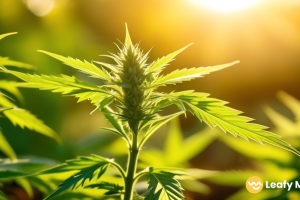
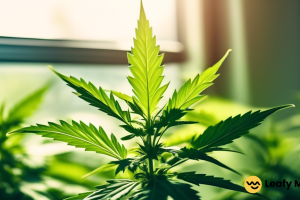
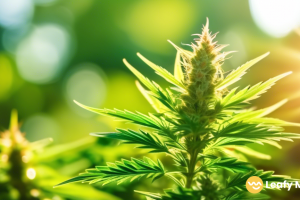




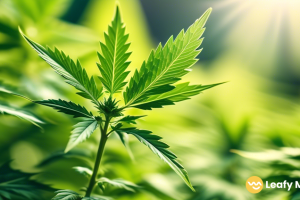
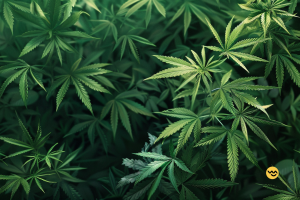
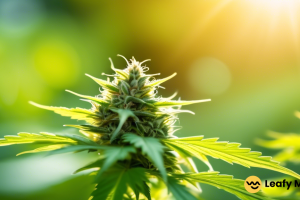
Leave a Reply